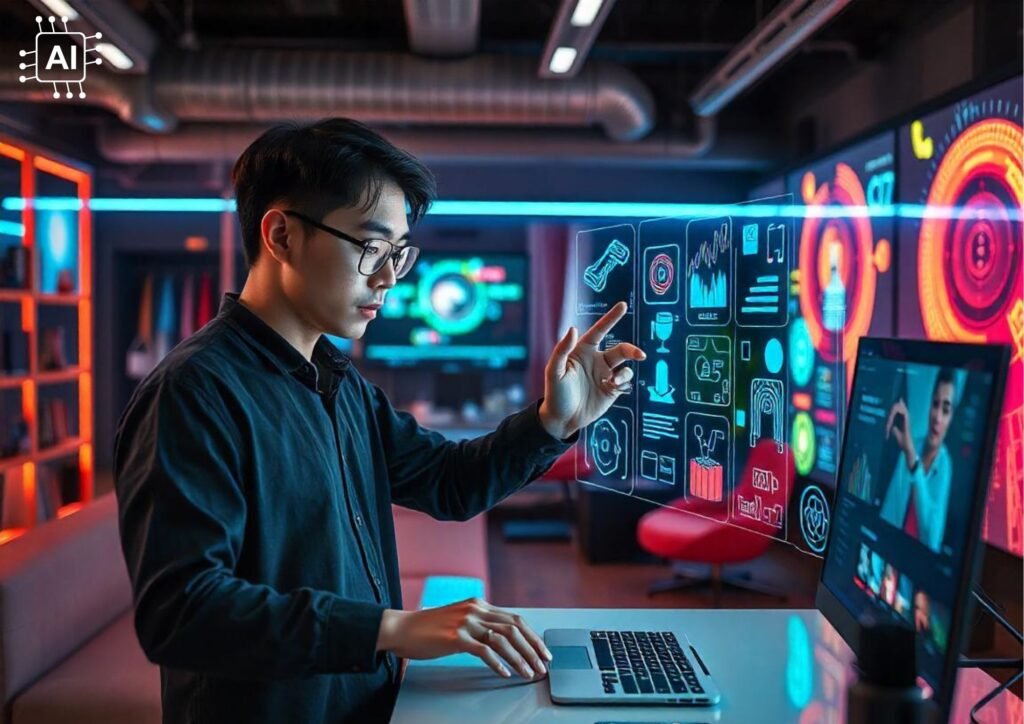Graphic design has always symbolized creativity and talent, but with the introduction of artificial intelligence, designers’ experiences are becoming vastly new. AI automates tasks, pushes boundaries of creativity, and generally makes the design process more efficient and accessible. But precisely how does AI reshape the environment of graphic design?

Table of Contents
AI in Graphic Design
Artificial intelligence has silently crept into most industries; graphic design is no exception. From automating mundane tasks to pushing boundaries on creativity, AI has thoroughly revised how designers work. What does this portend for creativity and efficiency in design? As the capacity of AI further expands, designers can now think more about the big picture with less concern for time-consuming details. In this article, we delve into the ways in which AI is turning graphic design into an efficient and creatively richer field.
How AI Enhances Creativity
Is there creativity in a machine? Though AI may not be independently ‘thinking’, it can definitely add to human creativity. Analyzing the patterns and generating manifold variations, AI opens up avenue upon avenue of new possibilities to explore. This is as good as having an infinite number of brushes in a digital painting studio. AI is able to propose color schemes, suggest layouts, and even create mock-ups based on the bare minimum input from a designer, freeing the designer’s mind for more conceptual high-order work.
AI-Powered Design Tools
A number of AI-powered design tools have begun to emerge; they are revolutionizing the way designers approach design projects. Technologies like Adobe Sensei, Canva’s Magic Resize, and other AI-powered design tools have the ability to analyze what a user is trying to communicate and make design suggestions in real time. By making recommendations on design to automatically readjusting layouts, even automatic image optimization for different formats, these design tools are intended to enhance and not replace human creativity.
Automating Repetitive Design Tasks
Probably one of the most valuable contributions AI makes to graphic design is automating repetitive tasks. No more tedious resizing of images for various platforms, no more tedious hour over element alignment. AI can do such tasks with ultimate precision and free designers to truly focus on what matters: creativity. This would be somewhat equivalent to the artist having an assistant mix his paints and clean his brushes, so he could just paint.
AI in Logo and Branding Design
Branding and logo design is another big aspect of graphic design. The inclusion of AI enabled the tools, such as Logojoy and Tailor Brands, to provide users a service where input of a few parameters gets them professional-quality created logos. Although traditional design is still at the forefront, AI-designed logos can be quick and cheap while, for businesses-like startups, the consequence is an affordable way to look professional without the high price of a custom design.
Personalization and AI-Driven Marketing Materials
Ever notice how some ads just seem to be tailored for you? Yep, that’s AI in action. With the ability of AI to analyze heaps of data, personalized marketing materials that really strike a chord with particular audiences are within reach. Designers can create customized graphics for different audience segments using AI-driven insights to really boost engagement and make their marketing efforts so much more effective.
Real-Time Design Feedback with AI
The feedback is instrumental in design, but the necessity to wait for a human to provide input may be time-consuming. AI-powered design tools can analyze design elements such as balance, color harmony, and contrast in real time. With immediate feedback, designers can achieve flying revisions and make necessary adjustments right on the spot.
AI-Assisted Image Editing and Manipulation
While image editing has long been a very time-consuming process, AI is making it fast and intuitive. Tools such as Adobe’s AI-based selection and editing features allow designers to make edits that used to be a feat in no more than a few clicks. For example, background removal that at least took minutes or even hours can now be done almost instantaneously. This frees up creative time; it even opens up possibilities for creative experimentation.
AI and democratization of design
Perhaps one of the most important effects AI has made in graphic design is democratization. It gives access to design to people with no training whatsoever. With AI-driven tools, anybody can create professional graphic visuals today. This transition enables small businesses, solo entrepreneurs, even hobbyists to create professional work that should have taken thousands of dollars in software and years of training.
Potential Drawbacks of AI in Design
As much as AI brings benefits, it is not without learnfreeskills its own downside. The major issues could be when it is overused it may well stifle originality. Another fear is that AI-designed creative work would turn out to be formulaic in nature and dissimilar from each other. Also, AI, in its present capabilities, might not understand context every time, which could result in designs missing the mark with regard to tone or cultural relevance.
AI in the Future of Graphic Design
The future of AI in graphic design seems bright, and these developments are bound to make these tools even more integrated into the creative process. As AI continues to get more developed, it is likely to assume more intellectually challenging tasks such as predicting design trends and creating completely new design ideas. But no matter how great its role, AI will always require human supervision and creativity to come up with great and powerful designs.
Questions ? Look here.
AI is revolutionizing the graphic design industry by automating repetitive tasks, enhancing creativity, and providing tools that allow for faster and more efficient workflows. It enables designers to focus on conceptual work while AI handles time-consuming details like resizing, color suggestions, and layout adjustments.
AI cannot fully replace human graphic designers as creativity and context are uniquely human traits. Instead, AI serves as a tool to assist designers by enhancing their efficiency, providing real-time feedback, and offering innovative solutions that complement their skills.
Popular AI-powered design tools include:
- Adobe Sensei: Automates editing tasks and provides intelligent design suggestions.
- Canva’s Magic Resize: Optimizes designs for different platforms.
- Logojoy and Tailor Brands: Create professional-quality logos based on user inputs.
AI enhances creativity by analyzing patterns and generating multiple design variations. It provides tools for exploring new ideas, such as suggesting color schemes, creating mock-ups, and optimizing layouts, freeing designers to focus on more strategic and artistic tasks.
AI in logo and branding design offers:
Quick and affordable solutions for startups and small businesses.
- High-quality designs based on minimal user input.
- Customization options that allow businesses to achieve a professional look without extensive resources.
AI analyzes user data to create highly targeted and personalized marketing materials. It enables designers to craft graphics that resonate with specific audience segments, boosting engagement and ensuring more effective communication.
AI democratizes design by making professional-grade tools accessible to non-designers. This allows small businesses, solo entrepreneurs, and hobbyists to create high-quality visuals without extensive training or costly software.
While AI offers many benefits, some potential drawbacks include:
- Risk of over-reliance, leading to formulaic or unoriginal designs.
- Challenges in understanding cultural or contextual nuances.
- Dependence on human oversight to ensure creativity and relevance.
